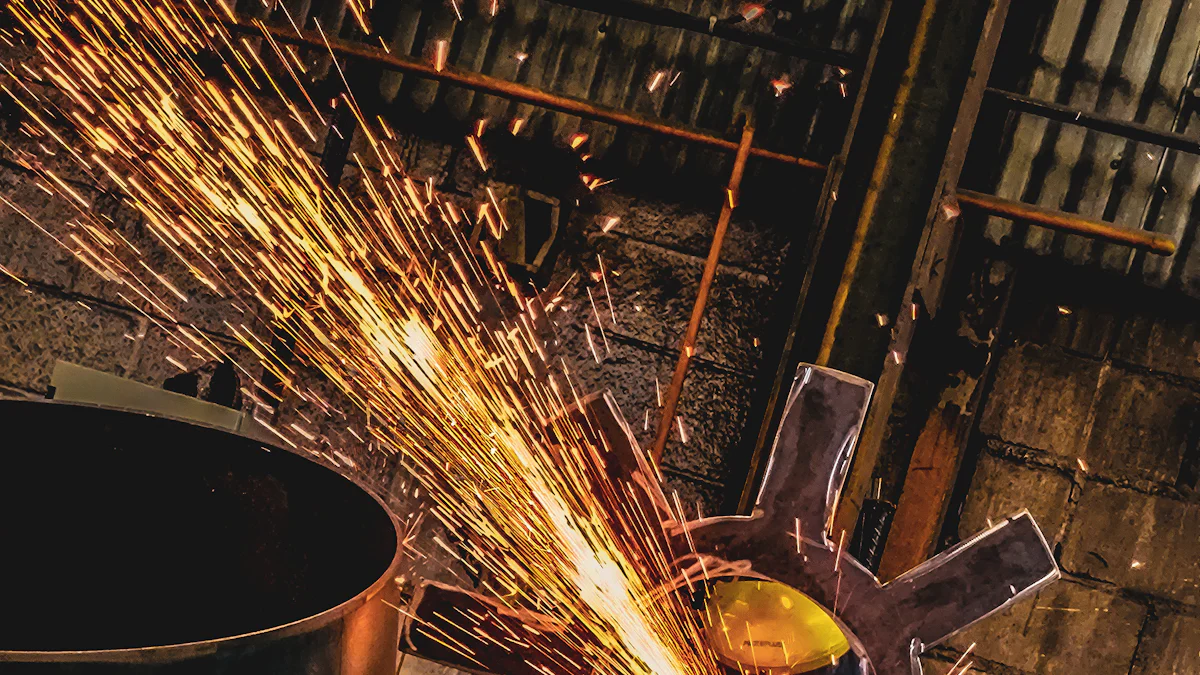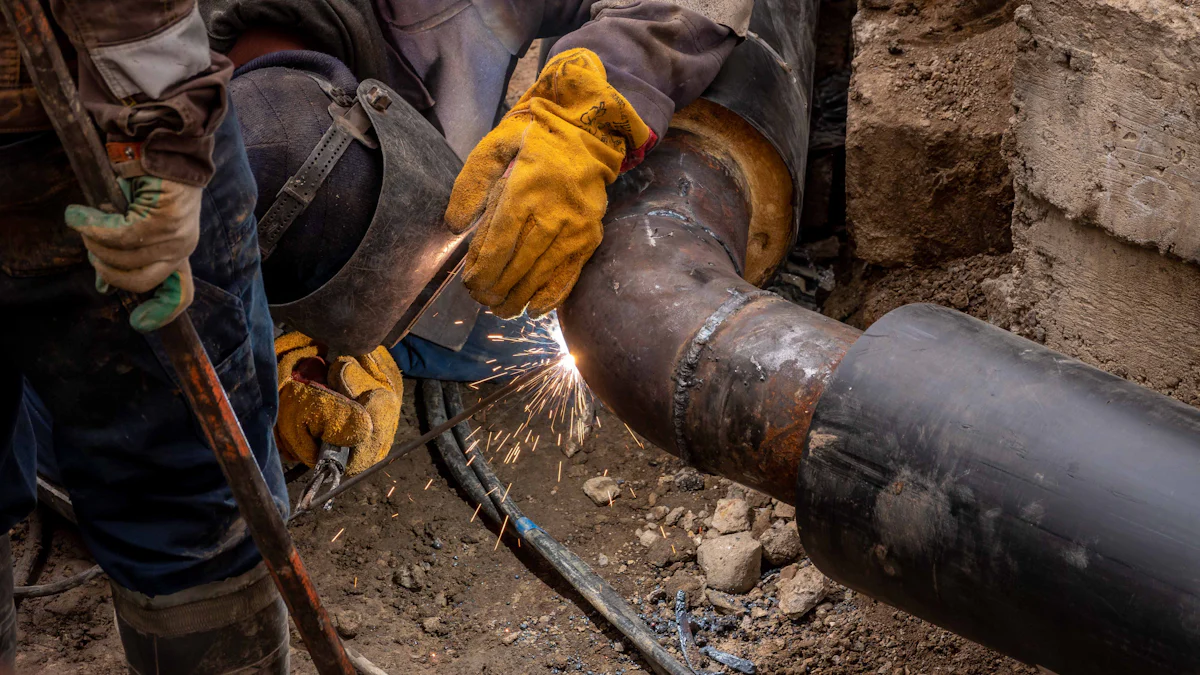
News

You need pipelines that can endure harsh conditions and perform reliably over time. Post weld heat treatment equipment plays a crucial role in achieving this. It reduces stress in welded joints, preventing cracks and material failures. Pipelines often face challenges like corrosion, natural force damage, and equipment failure. Without proper treatment, these factors can compromise durability. Advanced solutions like PWHT Induction Heating ensure structural integrity and long-term performance. Induction heating technology offers precise temperature control, making it ideal for pipelines. Using an induction heating machine for pipeline applications enhances safety and reliability.
Key Takeaways
Post weld heat treatment tools lower stress in welded parts. This stops cracks and makes pipelines last longer.
Induction heating gives exact temperature control. It heats and cools evenly, keeping materials strong.
Canroon's modern tools cut repair costs and make pipelines last longer. It is a wise choice to use them.
Challenges Pipelines Face Without Post Weld Heat Treatment Equipment

Thermal Stress and Its Impact on Welded Joints
Thermal stress can severely compromise the structural integrity of pipelines. When you weld a joint, uneven heating and cooling create internal stresses. These stresses distort the material, causing dimensional inaccuracies. Cracks may form, especially in materials with low ductility or sensitivity to thermal shock. Over time, stress concentrations around welds increase the risk of fatigue failure, particularly in transmission pipeline welding.
Without post weld heat treatment equipment, these issues remain unaddressed, jeopardizing weld quality and integrity.
Hydrogen-Induced Cracking and Material Brittleness
Hydrogen-induced cracking is another critical challenge. Hydrogen enters the pipeline material, often from wet environments, and diffuses into the steel. This leads to:
Hydrogen diffusion, forming small crack-like flaws.
Internal pressure buildup, causing blistering and crack formation.
Hydrogen-enhanced localized plasticity, which promotes crack propagation.
Hydrogen-enhanced decohesion, reducing the stress needed for metal atoms to fracture.
High-strength steels and materials like nickel and titanium are particularly vulnerable. Without induction heating, hydrogen embrittlement can weaken your pipeline, leading to catastrophic failures.
Material Inconsistencies and Structural Weaknesses
Material inconsistencies often arise during welding. Variations in cooling rates can create weak zones in the pipeline. These inconsistencies reduce the pipeline’s ability to handle operational stress and environmental factors. Induction heating ensures uniform heating and cooling, stabilizing the material and enhancing its durability. Without it, your pipeline may fail under pressure, risking costly repairs and downtime.
The Heat Treatment Process and How It Works
Temperature Control and Stress Relief
The heat treatment process begins with precise temperature control, which is vital for relieving stress in welded joints. When you weld a pipeline, residual stresses form due to uneven heating and cooling. These stresses can weaken the material, making it prone to cracking and fatigue. Post-weld heat treatment addresses this by using controlled heating to restore balance.
Key steps include:
Gradually heating the material to a specific temperature.
Holding it at that temperature to allow stress relaxation.
Cooling it uniformly to prevent new stresses from forming.
This process not only reduces distortion but also enhances the pipeline's ability to withstand operational loads. Induction heating technology ensures precise temperature management, making it an ideal solution for stress relief in pipelines.
Structural Stabilization Through Controlled Cooling
Controlled cooling is another critical aspect of the heat treatment process. After heating, the material undergoes a carefully managed cooling phase. This step stabilizes the microstructure, ensuring uniformity and strength. Variations in cooling rates can create weak zones, but controlled cooling eliminates this risk.
By refining the microstructure, this process optimizes properties like hardness and ductility. It also improves the pipeline's resistance to environmental factors such as corrosion. Induction heating provides the precision needed for consistent results, ensuring your pipeline remains durable and reliable.
Prevention of Hydrogen-Induced Cracking
Hydrogen-induced cracking poses a significant threat to pipeline integrity. During the heat treatment process, specific techniques remove trapped hydrogen from the material. Controlled heating and cooling play a crucial role in this. By applying heat at the right temperature, you can diffuse hydrogen and prevent cracking.
Additional methods include:
These techniques ensure your pipeline remains free from hydrogen embrittlement, enhancing its safety and longevity. Induction heating technology excels in this area, offering precise control to achieve optimal results.
Benefits of Canroon's Post-Welding Heat Treatments for Pipelines
treatments. Canroon’s equipment uses advanced induction heating to maintain precise heat levels. This ensures consistent results, reducing the risk of overheating or underheating your pipeline materials.
Uniform Heating Distribution
Uneven heating can compromise weld quality and integrity. Canroon’s technology ensures uniform heat distribution across the entire weld area. This eliminates weak zones and enhances the overall strength of your pipeline, giving you peace of mind about its performance.
Technical Considerations for Post Weld Heat Treatment Equipment
Temperature Ranges and Material Thickness
When performing post weld heat treatment, you must carefully manage temperature ranges to maintain weld quality and integrity. Different materials require specific temperature settings to achieve optimal results. For example:
For carbon steel, the treatment must stay below the lower critical temperature to prevent brittleness. Precise temperature control is essential to avoid forming hard martensite structures, which can weaken the pipeline. Additionally, the thickness of the material affects how heat penetrates. Thicker pipelines require higher energy levels and longer heating times to ensure uniform stress relief. Induction heating technology excels in managing these variables, providing the precision needed for effective treatment.
Cooling Rates and Their Impact on Material Properties
Cooling rates play a crucial role in determining the final properties of your pipeline. Rapid cooling can lead to hard, brittle structures, while slow cooling ensures a more ductile and stable material. Controlled cooling eliminates weak zones and enhances the pipeline’s resistance to operational stress. By using induction heating, you can achieve consistent cooling rates, which stabilize the microstructure and improve durability. This process also reduces the risk of distortion, ensuring your pipeline maintains its dimensional accuracy.
Compatibility with Different Pipeline Materials
Post weld heat treatment equipment must adapt to various materials without causing damage. For thermally sensitive materials like Grade 347H stainless steel, precise temperature control is critical to prevent deformation or unwanted changes in properties. Heating welded joints to high temperatures can sometimes cause warping, compromising structural integrity. Induction heating minimizes these risks by delivering uniform heat distribution. Whether you’re working on transmission pipeline welding or offshore platforms, this technology ensures compatibility with a wide range of materials, maintaining weld quality and integrity.
Why Canroon’s IGBT Post Weld Heat Treatment Equipment Stands Out
Advanced Induction Heating Technology
Canroon’s advanced induction heating technology sets a new standard for post weld heat treatment. This system is designed to handle pipes with diameters ranging from 200mm to 1600mm and thicknesses of 25mm to 120mm. Its ability to achieve heating temperatures up to 788℃ makes it ideal for tackling even the most demanding pipeline projects.
You’ll benefit from its versatility, as it supports multiple applications like dehydrogenation heat treatment and intermediate stress relief. These features ensure that your pipeline maintains weld quality and integrity, even under extreme conditions. Whether you’re working in oil and gas, offshore platforms, or power plants, this technology adapts seamlessly to your needs.
Tip: Using Canroon’s induction heating technology ensures precise and efficient heat treatment, reducing the risk of material failure.
Precise Temperature Management and Uniform Heating
Precise temperature management is critical for effective post weld heat treatment. Canroon’s equipment excels in this area, minimizing defects and reducing residual stress in welded joints. By controlling temperature, holding times, and cooling rates, you can achieve uniform stress distribution and improved mechanical properties.
This precision is especially important for high thermal sensitivity materials. Accurate temperature control prevents embrittlement and ensures that your pipeline remains durable and reliable. With Canroon’s uniform heating capabilities, you eliminate weak zones, enhancing the overall strength of your pipeline.
Note: Proper temperature management not only improves weld quality but also extends the lifespan of your pipeline.
Multi-Functional Applications Beyond PWHT
Canroon’s IGBT equipment goes beyond post weld heat treatment. Its multi-functional design supports:
Welding preheat
Joint anti-corrosion coating
Shrink fitting
These additional applications make it a valuable tool for diverse projects. Whether you need to prepare materials for welding or protect joints from corrosion, this equipment delivers exceptional results. Its adaptability ensures that you can tackle various challenges with a single, reliable solution.
Reminder: Investing in multi-functional equipment like Canroon’s saves time and resources while boosting project efficiency.
You need post weld heat treatment equipment to ensure your pipeline remains durable and safe. This process eliminates residual stress, reduces defects, and strengthens welded joints, which are critical for maintaining structural integrity. Induction heating technology offers precise temperature control, ensuring consistent results and preventing material deformation. Canroon’s advanced equipment addresses challenges like heat loss and material sensitivity with features such as thermal insulation and real-time monitoring. By investing in this solution, you enhance safety, extend pipeline lifespan, and reduce long-term costs.
Tip: Proper heat treatment minimizes cracks and irregularities, improving the overall quality of your pipeline.
FAQ
What is the purpose of post weld heat treatment for pipelines?
Post weld heat treatment relieves stress in welded joints, ensuring your pipeline remains durable and resistant to cracking under operational loads.
How does induction heating improve the heat treatment process?
Induction heating provides precise temperature control and uniform heat distribution, enhancing the effectiveness of the treatment and ensuring consistent results.
Can post weld heat treatment prevent material failures?
Yes, it stabilizes the material structure, reduces residual stress, and prevents hydrogen-induced cracking, ensuring your pipeline performs reliably over time.
Please give us a message